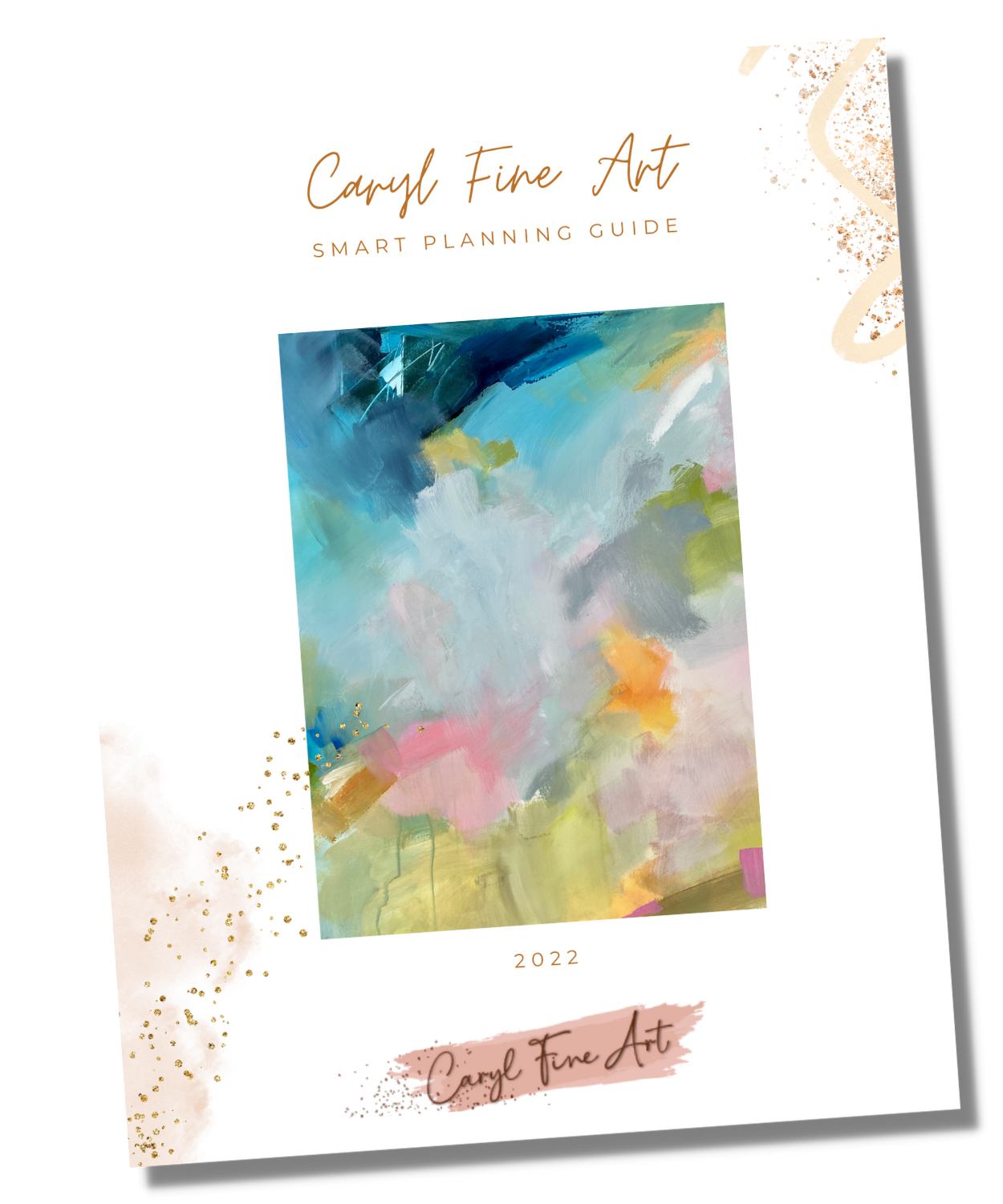5 Branding and Web Design Tips for Artists
Recently, my website has gone through a transition and gotten a huge makeover! It's been an exciting process, as I've worked on creating a cohesive look and really focusing on my brand. I went through page by page, finessing the colors, images, and copy, and I'm incredibly happy with how it turned out! This is a process that I undertake every year or two, to ensure that my website perfectly reflects my brand as it evolves.
Creating or revamping a website can feel like an overwhelming process (I know that firsthand!), but I hope I can demystify parts of it for you here. Here are 5 branding and design tips specific to artists to help you create a cohesive site of your own!
1. Make a list of "brand" words.
What sort of feel does your personal brand have? Is it whimsical, edgy, bright, colorful, welcoming, minimalist? Your list can have multiple words, but try to limit it to five or six that really capture what you evoke with your product and presence. Take a look at your art when you do this, and consider how a stranger would characterize your art.
Another idea is to examine your social media accounts and think about which aspects of your personality you share with your audience. Are you irreverent, funny, thoughtful, playful, introspective, helpful? The only wrong answers would be to choose brand words that you wish represented your brand rather than ones that actually represent your brand.
2. Make a Mood Board.
Create a mood board full of colors, images, quotes, and fonts that resonate with you and reflect your list of brand words. For example, if your words are "bright," "breezy," and "minimalist," you might have pictures of large sunny windows and colors in a light, neutral palette. Have fun with this process! Pinterest is a great resource for finding images that inspire you and that fit the look you're going for. The search options are endless.
3. Draw inspiration from other websites you admire.
Is there a particular artist whose site really speaks to you? Make a list of the things about it that you're drawn to. Those things could be related to the layout (for example, you love the layout of their landing page or they have a scrolling gallery that you think is great) or the content (perhaps their site has strong copy that really communicates their personality in a way that inspires you).
Once you have a list of the elements that you really like, figure out if any of them are translatable to you, and if you can adapt those elements to fit your brand and website. You don't want to pull or copy things directly, of course, but there can be a lot to learn from successful websites, and there are endless ways to put your own spin on those elements! It also helps to pull inspiration from the websites of multiple artists, so you create your own perfect, original mix.
4. Apply your mood board and other inspiration to your website.
Focus on the colors, type fonts, and feelings that your mood board evokes. Select cohesive images to feature on your site, and keep colors consistent across sections and pages. Keep your mood board handy, and glance back and forth between it and the web page you're working on. If the page seems to fit in with the mood board, you're on the right track!
5. Use Canva if Photoshop isn't your forte.
Canva is an excellent free photo editing website. It's a rich, user-friendly, exceptionally easy way to overlay text onto images, create photo grids, and more for website images. And Canva offers more than just photo manipulation: It makes it easy to create thumbnails or other design elements that have a professional polish. You don't need to be a photoshop wiz to get some great banners and page headers!
I hope these suggestions got you fired up to get started on your website or to refresh your current one. The most important thing is to enjoy the process, and use it as a way to further investigate and get to know your brand. Have fun with it! I’d love to hear from you in the comments…which tip was most helpful to you?
Free 2022 Artists Planning Guide
I want to share my method with you so you can reach your art goals in 2022! I’ve created a free resource just for you: The Caryl Fine Art 2022 SMART Planning Guide! Download this guide and then get planning!

